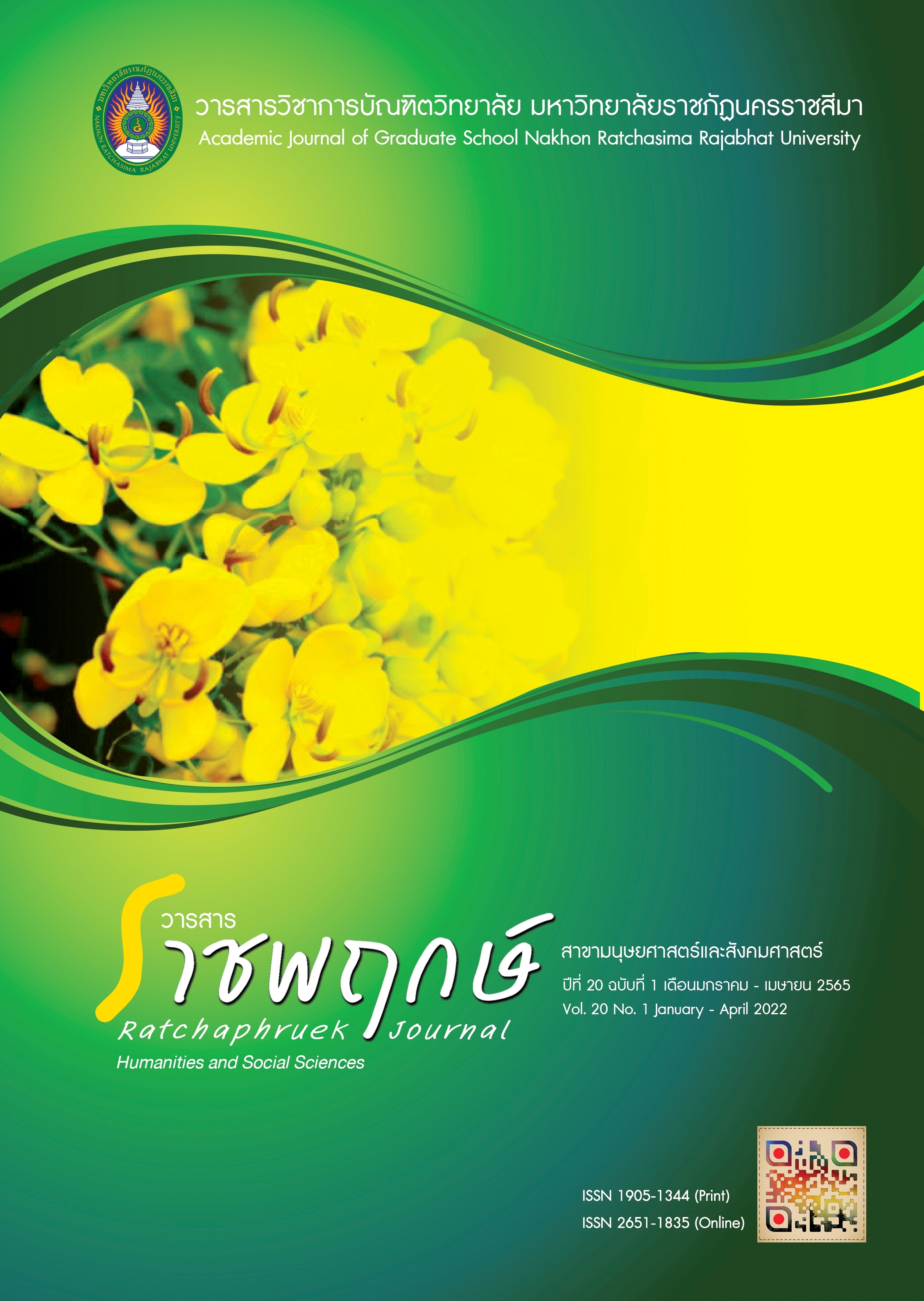The Validation of Constructivist Mobile Learning Environment Model to Foster Creative Thinking for High School Students
Main Article Content
Abstract
This research aimed to examine the internal validation and external validation of constructivist mobile learning environment model to foster creative thinking for high school students. The target group consisted of 12 high school students and 6 experts. The model research phase 2: Model validation was employed in this study. Both quantitative and qualitative data were collected and analyzed by mean, standard deviation, percentage, and protocol analysis. The result showed that: (1) The internal had 3 aspects of media, content, and model design which was quality and appropriate in accordance with the theories and concepts in all elements; (2) The external validations were: 1) Students’ creative thinking with compounded of fluency, flexibility, originality, and elaboration; 2) The learners’ achievement (= 20.25, S.D.= 2.39); and 3) The learners’ opinions toward constructivist mobile learning environment model.
Article Details

This work is licensed under a Creative Commons Attribution-NonCommercial-NoDerivatives 4.0 International License.
References
จันทรา ด่านคงรักษ์. (2563). การพัฒนาการสอนทักษะการคิดสร้างสรรค์ (พิมพ์ครั้งที่ 2). กรุงเทพฯ: จุฬาลงกรณ์มหาวิทยาลัย.
ใจทิพย์ ณ สงขลา. (2561). การออกแบบการเรียนแนวดิจิทัล = Digital learning design. กรุงเทพฯ: โรงพิมพ์แห่งจุฬาลงกรณ์มหาวิทยาลัย.
พิญญารัศม์ สิงหะ และสุมาลี ชัยเจริญ. (2562). การตรวจสอบความตรงของโมเดลสิ่งแวดล้อมการเรียนรู้ บนเครือข่ายตามแนวคอนสตรัคติวิสต์ที่ส่งเสริมการแก้ปัญหา โดยบูรณาการศาสตร์การสอนกับศาสตร์ทางประสาทวิทยาศาสตร์. วารสารวิทยบริการ มหาวิทยาลัยสงขลานครินทร์, 30(1), น. 27-29.
วีระพล พลีสัตย์. (2562). การพัฒนาโมเดลสิ่งแวดล้อมการเรียนรู้การจำลองสถานการณ์ ตามแนวคอนสตรัคติวิสต์ที่ส่งเสริมการตัดสินใจ สำหรับนักศึกษาสาขาเทคโนโลยีไฟฟ้าอุตสาหกรรม (วิทยานิพนธ์ดุษฎีบัณฑิต, มหาวิทยาลัยขอนแก่น).
ศรเพชร สีหะราช. (2560). การพัฒนาโมเดลสิ่งแวดล้อมทางการเรียนรู้บนเครือข่ายตามแนวคอนสตรัคติวิสต์เพื่อส่งเสริมการแก้ปัญหาสำหรับนักศึกษาระดับอุดมศึกษาในประเทศลาว (วิทยานิพนธ์ดุษฎีบัณฑิต, มหาวิทยาลัยขอนแก่น).
อรวรรณ เตชะพรพงษ์.(2559).การพัฒนาโมเดลสิ่งแวดล้อมการเรียนรู้บนเครือข่ายตามแนวคอนสตรัคติวิสต์ที่ส่งเสริมการคิดสร้างสรรค์ โดยบูรณาการศาสตร์การสอนกับประสาทวิทยาศาสตร์ (วิทยานิพนธ์ดุษฎีบัณฑิต, มหาวิทยาลัยขอนแก่น).
Chang, Y. S., Chen, S. Y., Yu, K. C., Chu, Y. H. & Chien, Y. H. (2017). Effects of cloud-based m-learning on student creative performance in engineering design. British Journal of Educational Technology, 48(1), pp. 101-112.
Chen, Y. L. (2020). Students’ Attitude Toward Learning and Practicing English in a VR Environment. In Huang, T. C., Wu, T. T., Barroso, J., Sandnes, F. E., Martins, P. and Huang, Y. M. (Eds.). Innovative Technologies and Learning: Third International Conference ICITL 2020 Proceedings (pp. 128-136). Cham: Springer.
Elfeky, A. H. & Masadeh, T. (2016). The Effect of Mobile Learning on Students' Achievement and Conversational Skills. International Journal of Higher Education, 5(3), pp. 20-31.
Mirzianov, O., Mitasiunas, A., Novickis, L. & Ragaisis, S. (2017). Development and Validation of Learning Process Assessment Model. In Ginters, E., Kohlhammer, J. (Eds.). Procedia Computer Science ICTE 2016 Proceedings (pp.258-265). Amsterdam: Elsevier.
Richey, R. C. & Klein, J. (2007). Design and developmental research. New Jersey: Lawrence.


